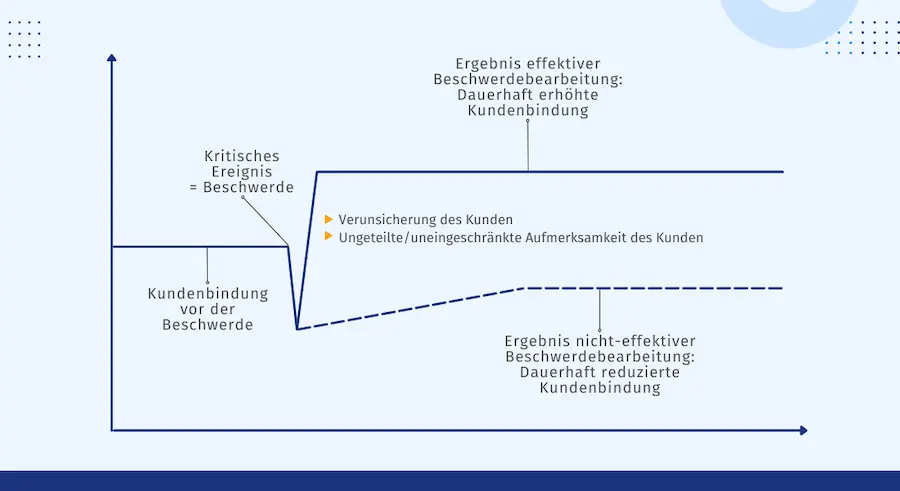Customer Experience Management
Complaints are important customer voices - because every complaint contains an opportunity to optimize the business relationship. Use complaints to turn dissatisfied customers into valuable promoters for your brands and products! We'll show you how this is possible!
Dealing with complaints
- 1 Dealing with complaints: How does your company do it?
- 2 Here are 6 simple tips to keep in mind when dealing with customer complaints
- 3 1:1 Live online presentation: Dealing with complaints: Complaint management software from QuestionPro
- 4 Try software for market research and experience management now for 10 days free of charge!
Dealing with complaints: How does your company do it?
You may be familiar with this: dissatisfied customers complain. That's always uncomfortable. Especially if there is a culture in your own company that views mistakes as something bad. Or put yourself in the shoes of a dissatisfied customer who is not taken seriously or is even accused of being at fault. In many companies, complaint processes are inadequately defined. Or it can even make it difficult for dissatisfied customers to find a support hotline on the website. Or you spend an endless amount of time on hold and are constantly put off.
But it is precisely in every complaint that you have the customer's undivided or unrestricted attention. This means that the customer loyalty level can be significantly increased from the current customer loyalty level for this customer by successfully dealing with the complaint. It can also be massively reduced if the customer has a negative experience.
How do you and your employees deal with dissatisfied customers? Are you taking advantage of the potential of unrestricted customer attention in this moment of truth? You should instruct your employees to view complaints and complaints as circumstances they can use to improve your products and services. And ultimately also your own work performance.
We have put together six simple tips for you on how best to respond to customer complaints.
Here are 6 simple tips to keep in mind when dealing with customer complaints
1. Act immediately
Whenever you receive a customer complaint, act immediately and do not try to delay the complaint. Every delay annoys your customers even more! You also run the risk of your customers sharing their dissatisfaction publicly, namely via review portals and social media platforms. Once this happens, you carry the burden of public negative evaluation with you. So if potential customers find out about your company in the relevant review portals and find a negative entry there, this can cost you real sales. Although it is possible to respond to the negative review immediately using QuestionPro's CX Reviews reputation management tool (which you should do), it is better to intercept negative feedback beforehand!
2. Don't hide!
As suggested above, the worst thing for your customers is when your employees are unavailable. Or if there is not a single indication on your website where you can complain. Dealing with complaints like this is definitely not the best way. There are companies that direct helpless customers to an FAQ page. This can work if it's a banality. But the best thing is if you enable your customers to get in touch with you personally, be it just by email or via a contact form. Or consider a feedback tab. Place a “Contact” or “Help” button clearly visible on your website and ensure that your customers actually receive help here. Anything else will lead to frustration, annoyance and, in the most likely case, to your customers defecting to the competition.
3. Ask as many questions as possible
When someone describes a bad customer experience, ask as many questions as possible to identify the problem to make dealing with the complaint as pleasant as possible for the customer. Plus, your beach customers will consider it an act of attention if you ask them questions. This signals that you really take your customers seriously. For example, if a customer says: “I think the service wasn't good,” ask them where exactly the problem was. Identify the problem by asking specific questions. Train your employees in this way, which will also make them more confident in dealing with dissatisfied customers.
4. Inform your customers about the current status of the complaint
Nothing is more unpleasant for a customer if they have to find out the status of their complaint themselves. Therefore, dealing with the complaint involves informing your customers of any status changes via email or SMS. This can also be automated using innovative technology, for example using a closed loop feedback system that allows you to define complaint processes in a very fine-grained manner. Never put your customers in the situation of having to ask themselves what the status of their complaint or complaint is. And do this favor for your employees too! Because it can be annoying and embarrassing for them too. Dealing with complaints in this way can have a negative impact on the satisfaction of your employees.
5. Find a solution that satisfies everyone
Some complaint cases cost a company more money than a quick and uncomplicated replacement of a faulty product or the improvement of a service. In some cases, when dealing with a complaint, it may be advisable to exchange the goods complained about after the first contact from an angry customer instead of tying up many employees to deal with the complaint. Of course, there are also cases in which the customer is partly to blame or it is simply impossible to understand the circumstances under which a product was damaged or a service could not be carried out correctly. Here you should make a compromise that is as manageable as possible for you and that does not bring you any economic disadvantages. Is it a repeat and loyal customer? What is the probability of churn? Act on the basis of reliable data to make a quick decision. CX software can provide the crucial data in real time and optimize the way complaints are handled.
6. Simply accept that not everything can always go smoothly
Of course, it would be desirable for your company to offer products and services that are free of complaints. But honestly, how likely is it that this is the case? Mistakes happen. For example, when producing a product or performing a service. Just take that for granted and learn from your customers’ complaints. Establish a positive error culture in your company and emphasize how complaints are handled as a decisive factor for customer enthusiasm. Employees don't have to jump at every complaint and be afraid that their head will be ripped off. This also increases the commitment and performance of your employees, they have more confidence in themselves and are more innovative in the long term.
1:1 live online presentation:
Dealing with complaints: Complaint management software from QuestionPro
We'll show you in a live demo how you can handle complaints from a technological perspective.
Make an individual appointment now.
Try software for market research and experience management now for 10 days free of charge!
Do you have any questions about the content of this blog? Simply contact us via contact form. We look forward to a dialogue with you! You too can test QuestionPro for 10 days free of charge and without risk in depth!
Test the agile market research and experience management platform for qualitative and quantitative data collection and data analysis from QuestionPro for 10 days free of charge
FURTHER KEYWORDS
SHARE THIS ARTICLE
KEYWORDS OF THIS BLOG POST
Dealing with complaints | Suggestions





